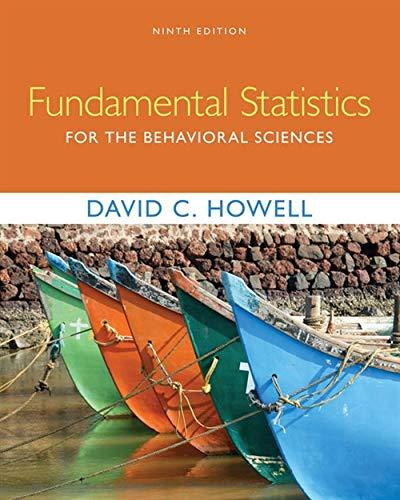With reference to Exercise 4.13, if people take longer to process an image that has been both
Question:
With reference to Exercise 4.13, if people take longer to process an image that has been both reversed and rotated, then the mean reaction time should depend on whether or not the comparison stimulus has been reversed. If reversal does not alter the difficulty of processing information, then the means should be similar. What do the answers to Exercise 4.13 suggest about how we process information?
Exercise 4.13
In Table 3.1 the reaction time data are broken down separately according to whether we are looking at the same stimulus or whether the stimuli are mirror images of one another. The data can be found by going to this book’s website and obtaining the data labeled as Tab3-1.dat.
Using SPSS or similar software, calculate the mean reaction time under the two conditions.
Does it take longer to respond to stimuli that are mirror images? This question requires some thought. You can either go to the menu labeled Data and ask it to split the data on the basis of the variable “Stimulus” and then use the Analyze/Descriptive Statistics/Descriptives analysis, or you cannot split the data but go to Analyze/Descriptive Statistics/Explore and enter the variable “Stimulus” in the Factor List.

Step by Step Answer:

Fundamental Statistics For The Behavioral Sciences
ISBN: 9781305652972
9th Edition
Authors: David C. Howell





